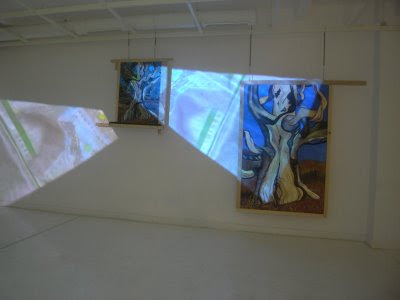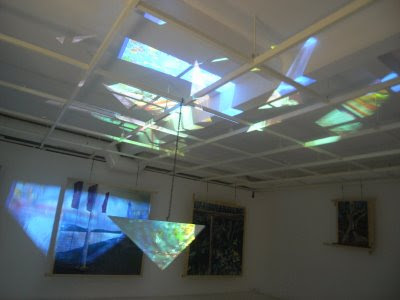In the Tubingen seminary three young students witnessed with enraptured rejoicing the great days of the revolutionary liberation of France. With youthful enthusiasm they planted a tree in honour of liberty, danced around it, and swore eternal loyalty to the ideal of the great struggle for liberation. Each of these three youths – Hegel, Hölderlin, Schelling – represented in his later development a typical possibility of the German reaction to the course of events in France. Toward the end of his life, Schelling lost himself in the narrow-minded obscurantism of an abject reaction, of a revived Romanticism during the preparatory period of the ‘48 revolution. Hegel and Hölderlin did not betray their revolutionary oath. But when it was a question of realizing it, the difference in their interpretation reveals clearly the ideological courses which the preparation of the bourgeois revolution could and had to follow in Germany.
-Georg Lukács
In 1841, Søren Kierkegaard left Copenhagen for Berlin, to attend the lectures of Friedrich Schelling. While his initial excitement at the promise of hearing Hegel refuted quickly soured to bored disgust when faced with the reality of the old academic’s turgid style, this, his first trip from his home town, provided the opportunity to author his first work of ‘indirect communication’, Either/Or. Like many thinkers, Kierkegaard’s biography is the least interesting thing about him, though unlike his peers it is to this that a large amount of attention has been applied, and the myth of the solitary tortured genius pacing the streets of Copenhagen, which as we shall see was self-created, is one which has distracted many the pursuit of elusive truth in his diffuse writings.
Though Kierkegaard is rarely read at any great length or with any serious consideration or understanding, he belongs alongside Nietzsche, Marx and Freud on the small pantheon of thinkers whose originality and clarity of purpose founded the modern world. He wrote prodigiously, and in a style which deliberately worked against easy intelligibility – often contradictory, generally quite oblique, and more akin to poetry than philosophy in traditional western terms. Like his inheritor, Friedrich Nietzsche, he refuted the value of philosophical systematizing, and was a determined irrationalist. It was with this purpose that he left for Germany, hoping to advance his cause of freeing Philosophy from the constricting systemization of Hegelian methodology.
Temperamentally incapable of adapting himself to the prevailing bourgeois Protestantism of the Denmark of his time, and regarding the ease with which others did so as due to a self-serving superficiality and lack of critical judgement on their part, Kierkegaard turned his brilliant intellect and considerable literary talent to the task of informing his public of its well-protected complacency. As a result, his polemic, and all his writings are polemical, pulls simultaneously in two directions: outwardly against bourgeois norms, and inwardly against his own suffering. In his outward attacks on society, he demanded the disestablishment of religious practice and cant, while inwardly he battled to assert the primacy of existence over externally derived knowledge. Every circumstance combined to make him suffer. His father was obsessed by guilt at the memory of having as a young boy cursed God; his mother was a servant girl whom his father had seduced before marriage; the frail and nervously labile constitution he inherited was further damaged by a fall from a tree. All this contributed to his deep understanding that modern man was living in a state of loss. The traditional was no longer meaningful and there seemed to be nothing to replace it with. His recognition was that he was living at one of those extreme points of history where one can no longer anticipate the future simply on the basis of the past, because we ourselves, knowingly or not, are undergoing a temporal and existential transformation toward the future of a new sustainability of the human being. As Hölderlin put it, “We live in a desperate time; a time when the old gods have flown and the new gods have not yet arrived”.
Essentially he was an affirmative existentialist; he asserted that all propositions presuppose the existence of their terms as a ground e.g. one cannot ask 'Does X exist?, only 'has this existing X the character A or the character B?'. This idea was to be the basis of all the important work done by Heidegger in Germany and Sartre in Paris during the first half of the 20th century. His life and work revolved around a practice he termed "indirect communication". He put a great deal of thought into the construction of this, which he talks about at length in his journals. It was his belief that what he had to say could not be proposed in some direct, blunt manner, so instead he developed a four-part plan to deliberately confuse his readers. Firstly, he published almost everything he wrote pseudonymously, generally picking different names for each work. This functioned not as a vain attempt to conceal his identity in the small, parochial Copenhagen of his day, but to allow him degrees of separation from the text. Secondly, he often writes with a sharp sense of irony, which often makes it very hard to tell whether you should take him entirely seriously or whether he's being sarcastic. Thirdly, he published a stream of what he termed "edifying discourse" to accompany these "aesthetic" works, and lastly, it consisted of setting up a "lived presence" in Copenhagen by walking round very conspicuously every day (his hatred of sunlight meant that he was invariably accompanied by a large umbrella), that would "counteract" or in some way dialectically inflect or subvert the expectations about him personally that had been set up by his works.
What makes Kierkegaard interesting to us? Kierkegaard is an irrationalist, as a result his work is poetic and intuitive rather than being systematic. It must be felt to be understood, making its quality aesthetic in nature, rather than grounded in an external epistemology.
Kierkegaard was interested in creative practice. He deliberately lived his life in way which would conflict with his written work, and within that work created texts which would work against his other texts, hoping to create a climate in which his work would take on an emergent power and authority.
Kierkegaard was a sensitive thinker, who was able to communicate ideas with fluent symbolism, by creating tableaus to be examined from different angles, exploring the nature of subjective truth.
Kierkegaard asserted the primacy of the individual subject, believing the exclamation “I exist” to be unique in the way it functioned.
Kierkegaard was interested in time, and the time of immediate experience, which reinforces the primacy of the individual in relation to the art object.
Every man, says Kierkegaard, lives either aesthetically, ethically or religiously. The experience from which the aesthetic starts, the facts which it sets out to overcome, is the experience of the physical weakness of the self in the face of an overwhelmingly powerful not-self: To survive I must at strongly and decisively. What gives me the power to do so? Passion.
The work for the show was created to function in attendance to these ideas. The canvasses all depict trees. Elemental imagery is prevalent throughout Kierkegaard’s oeuvre, and trees were a strong emotional touchstone for the writer, particularly with reference to himself. Besides the traumatic and formative fall from a tree in his youth, which left him in near constant discomfort for the rest of his life, he often visualised himself as a lonely fir tree, an image which Karl Jaspers pointed out was recurrent in Nietzsche, as both revolutionary thinkers came to terms with their intellectual uniqueness by visualising themselves as a tree atop an alpine peak, standing tall and alone.
The trees in the picture are all derived from images captured near the river Danube. The river Danube is the subject of the remarkable hymn Der Ister by Hölderlin, which traces the mythical history of the lower Danube, bathing place of Hercules. The reference to Hercules weaves the poem into Kierkegaard’s discussions of Greek religion in aesthetic terms. Hölderlin himself was similar to Kierkegaard, a highly strung visionary creating his work in direct opposition to prevailing bourgeois norms, and yearning for a greater aesthetic appreciation of our existence. Their shared revolutionary coda finds an interesting link in the attendance of Kierkegaard at the lectures of Schelling, also attended by the young Karl Marx, which sent both off in different revolutionary directions. Schelling, Hölderlin and Hegel had, as students at the Tubingen seminary, planted a tree in celebration of the French revolution, dancing around it gaily. This freedom tree, the Freiheitsbaum, is central to mythology of all three, and has an important place at the heart of this show.
Martin Heidegger, the most important philosopher of the twentieth century, owes an enormous debt to Kierkegaard’s existentialism. Some of Heidegger most famous lectures were on the subject of Hölderlin. One of Kierkegaard’s concerns, as that of Heidegger, is with the time of immediate experience – time as encountered by the concretely existing subject. This immediately experienced time, Kierkegaard argues, must clearly and consistently be differentiated from an abstracts, objective measured time which has to be spatialized in order to be known. The time of immediate experience is falsified if it is visualised abstractly in terms of a spatio-temporal coordinate. Time, thus understood, is transformed into a continuing succession of nows or temporal instants coordinated with spatial points. Commonly we think of time as such a succession, says Kierkegaard. We view it as a process of “going-by”, which may properly be understood as a definition of time in general. But this is not the particular time which the self experiences in its concrete immediacy. By defining time as a general process or continuing infinite succession, we already separate time into discrete units of past present and future, which simply become an infinite succession of nows succeeding each other in a definite order coming to be and passing away. But such a definition of time is foreign to immediate experience. The time of immediate experience has in itself no discrete, spatialized succession of nows. When we define time, says Kierkegaard “it seems plausible to define it also as the present, the past and the future. However, this distinction is incorrect, if one means by it that this is implied in time itself.” The implications of this conception of time and its suggested approach to the instantaneous nature of the aesthetic experience is one which is fundamental to the works on display.
Kierkegaard’s conception of indirect communication is central to the show. His desk, which has been recreated, functions as the one artefact tying his life and work together. It has been constructed from elemental materials sourced around Istanbul, which has a strong specificity to the show, the Bosporus being the implied birthplace of the Istros, the river which Hölderlin cries “must flow from the East.” The work was conceived with this in mind, and produced collaboratively under the Hats Plus identifier, which functions pseudonymously to keep the artists at one further remove from the work. The creation of the work is therefore an act which seeks a fusion of time, place, element and identity within the framework of the URA space.
































































































